| Another How-To from WorkingCreativity.com |
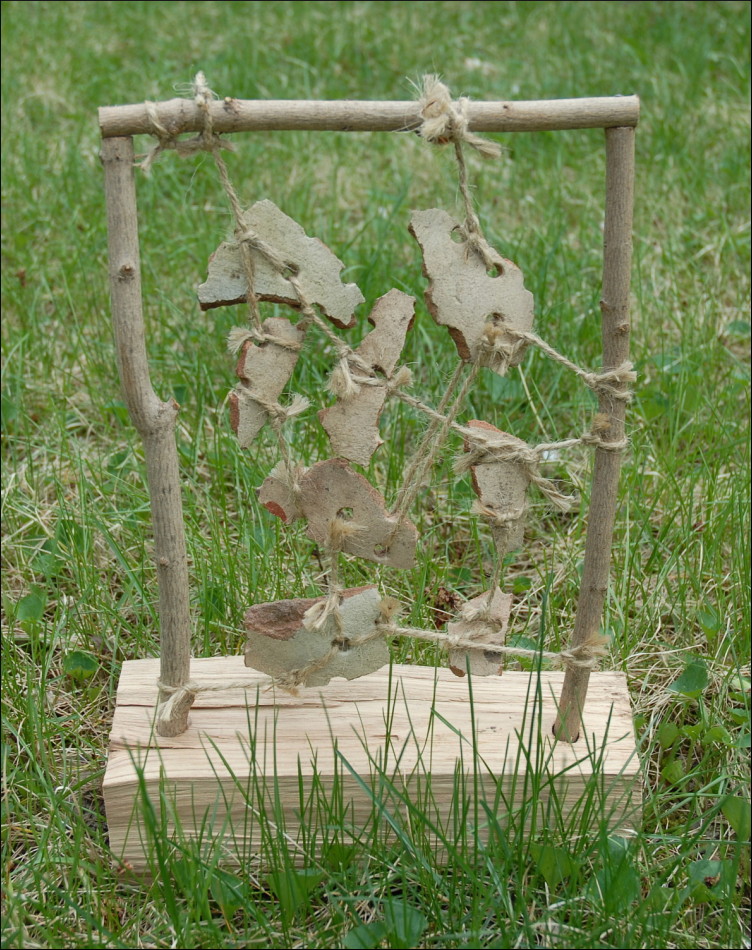
| A hanging panel of broken pieces of terra cotta |
| Getting here. |
Several years ago Janice had purchased some primitive terra cotta colanders from Michael Chiarello's napastyle.com website. One of them arrived broken. We put it outside where it has been through two or three winters--weathering and breaking into smaller pieces. 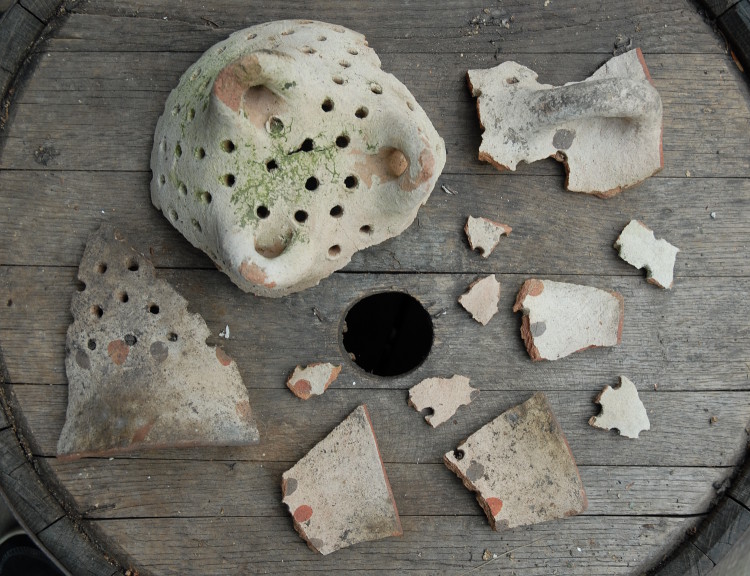
The idea of creating this hanging display arose as I was doing some spring cleaning around our backyard deck. As I was picking up the pieces of broken terra cotta--from this and a broken saucer--I thought "I should do something with these." My first thought was wondering how they would work in one of my frost catchers--maybe the terra cotta would be a good material for attracting or growing frost. So I just started thinking about how I would wrap one of these pieces in wire or string to include it in a frost catcher. This led to thinking about alternative uses and ideas--e.g., taking a bunch of these terra cotta pieces and wiring them into some sort of object (e.g., a clay pot) or display (e.g., a hanging panel). Working on frost catchers as well as on one of Janice's projects the previous fall--creating large stick wall panels--had me primed to think about wrapping things with wire (like broken sticks). I liked the images I was coming up with in my mind's eye: broken pieces of clay held together with string or being held together in a wire skeleton. I stopped working, got some brown twine and started tying the broken collader pieces together. I went from initial idea to completed object in about four hours that day. This project initiated a creative surge in my life that propelled me through a number of similar projects. Inspired by the hanging panel, I moved on to the weathered glazed pieces from the saucer and began wrapping them with wire over the course of several evenings while sitting on the living room couch. I created a clay pot from these pieces. I then applied the same wire-wrapping idea to create a stone pot. |
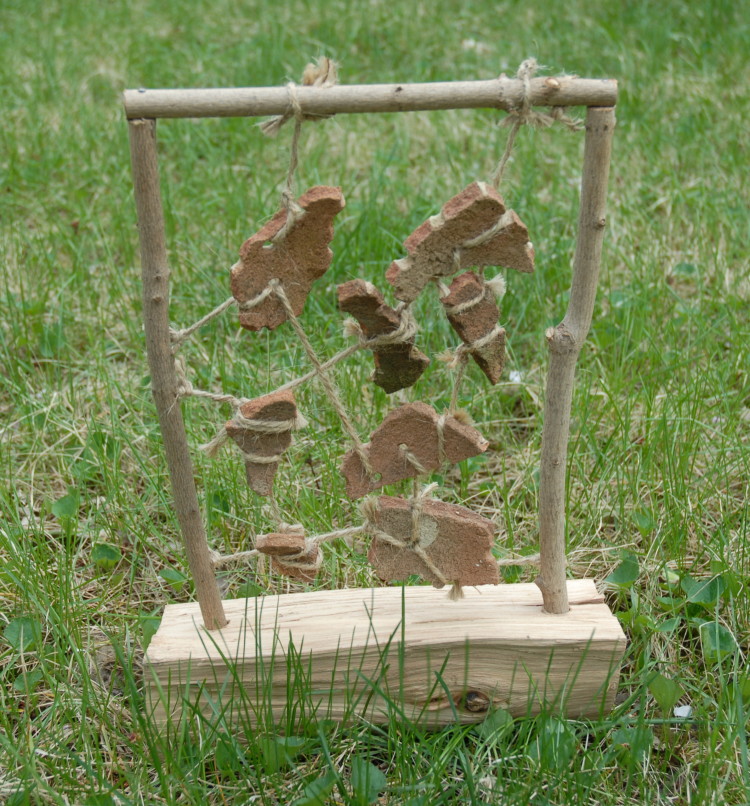 Back view of panel
Back view of panel
|
| Making it. |
| Ingredients: Broken pieces from a terra cotta colander, brown twine, sticks, wooden block, small nails (brads). |
| Tools: Scissors, drill, hammer--shown. Hand clippers (for stems and branches) and table saw--not shown and optional. |
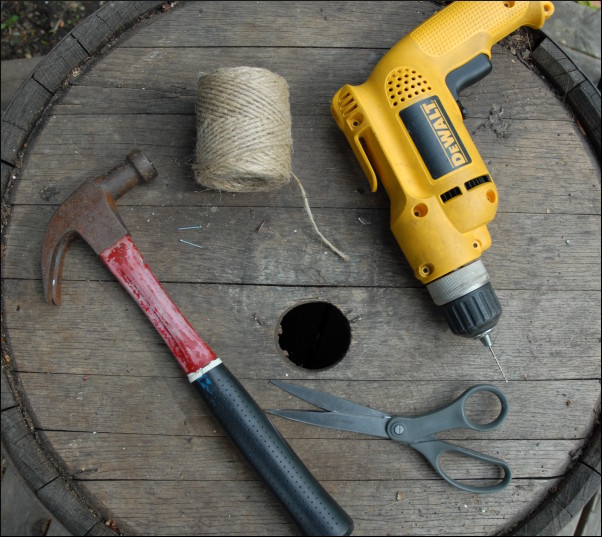 |
| Step one. Creating the panel of pieces. Selected pieces. Arranged them on flat surface. Tied them together with twine. |
| Step two. Making the base. Determined the size of the frame that will be needed for the panel. Used this to determine the necessary length for base. I was planning to use sticks for the frame and that led to the idea of putting it all on a wooden base--easiest thing for me to work with. I got the idea to use one of my firewood logs instead of a 2 x 4 board or other milled lumber--thought the roughness of a split log would go well with the sticks, string, and broken pottery pieces in terms of texture and color. I quickly found a squarish log in my pile of hickory wood that I figured would work--had at least one side that was flat enough to serve as a stable base. I immediately took the piece over to my father-in-law's and cut it to the length I needed on his table saw. |
| Step three. Making the frame. Returned home and drilled two holes in the wood base using the largest drill bit I had (3/8-inch). Found sticks cut last summer that I figured would squeeze into the drilled holes. I cut two pieces using a pair of hand clippers (not shown in tools photo). Twisted sticks into the holes and cut to identical height. Cut a third stick to go across the top. Drilled small holes in top stick and pounded small nails to secure it on either side. |
| Step four. Hanging the panel in the frame. Imagined how panel of pieces would now be tied to frame--pieces of twine that would be needed to hold it up at the top and on sides to pull it out. Drilled hole (larger than width of twine) through frame sticks where I figured the strings holding the panel in place would need to be. Attached string on top and sides. This process required several adjustments and string re-tying until panel pieces hung in place in a way that I liked. |
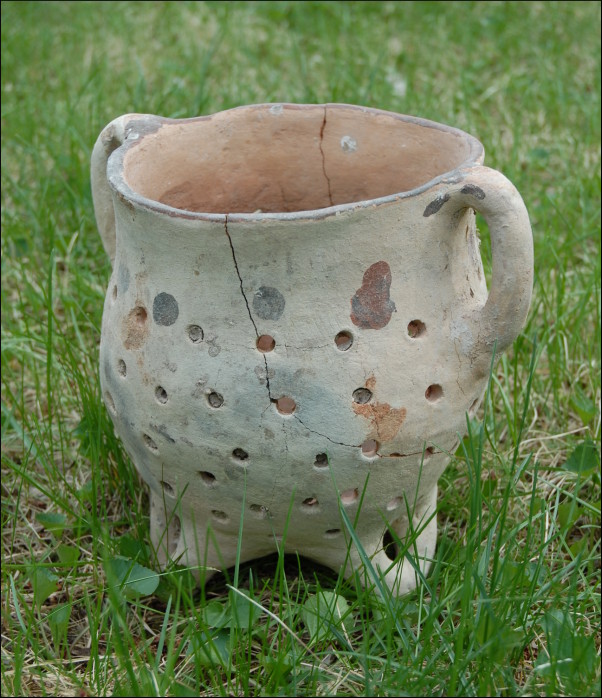 This is an example of the type of terra cotta colander that provided the broken and weathered pieces for this project. |
 Split hickory logs from which the wooden base was selected and cut (using a table saw)
Split hickory logs from which the wooden base was selected and cut (using a table saw)
|
 |
 |
| © 2008 |